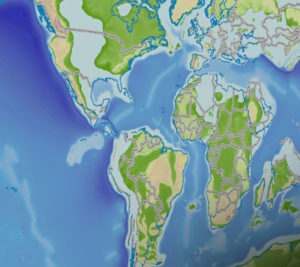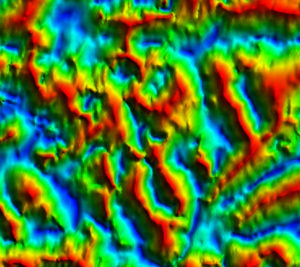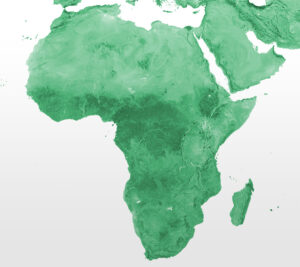The launch on December 15, 2022, of the Surface Water and Ocean Topography (SWOT) satellite mission from the Vandenberg Space Force Base California (Figure 1) ushers in a new era for sea surface altimetry measurements.
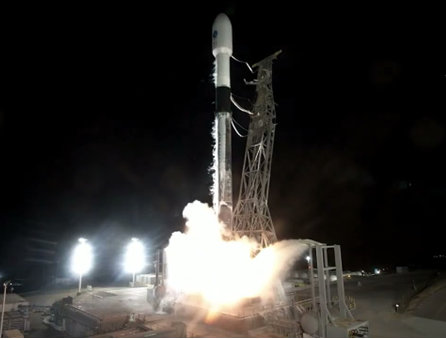
Figure 1. SWOT launch aboard a SpaceX Falcon 9 rocket, Dec. 15, 2022 (Image courtesy of NASA/JPL-Caltech from swot.jpl.nasa.gov).
The SWOT mission differs from other satellite altimetry in that it will measure swaths of surface water height rather than heights along orbital satellite tracks. These swaths will be ~120 km wide (with a 20 km gap in the middle) and result in a global dataset generated every 21 days, from mid-2023.
The data are expected to significantly enhance the quality of offshore gravity and Getech is using its long-standing expertise in generating gravity from sea surface heights to develop its workflows to maximise the impact of these new data. SWOT will also record a conventional altimeter track directly below the satellite.
Gravity Data from satellite altimetry ocean surface measurements
Gravity anomalies can be measured from space by gradiometers mounted on satellites, but due to fundamental physical limitations the results reveal only very long wavelength features (B in Figure 2). Sea surface elevation measured by satellite altimeters, however, can be converted to gravity anomalies, enabling a much higher resolution gravity map to be developed for all offshore areas of the World (A in Figure 2).

Figure 2. Gravity maps of part of the North Sea. A: based on satellite altimetry. This is the derived gravity field as if measured at sea-surface; B: based on space gravity measurements (model EIGEN-6S4) from several hundred km elevation. The latter is available both onshore and offshore, but with limited resolution compared to the altimetry derived map.
The sea surface is not a smooth ellipsoid, but has subtle variations caused by changes in the gravity field which are in turn related to density variations in the sub-surface (Figure 3). These small variations in sea surface can be measured to a precision of a few centimetres by altimeters mounted on satellites orbiting at heights of ~800 km.
Specialist processing converts these height measurements to a map of the gravity at the sea surface; the gravity anomalies generated are consistent across most offshore areas. The method has provided gravity maps of the World’s seas since the 1980s, culminating, after incorporation of data from new missions and advances in processing techniques, in the Getech 2020 Multi-Sat solution. For further information see our paper in Geophysical Prospecting (Volume 67, Issue 6) entitled “Satellite gravity – enhancements from new satellites and new altimeter technology”.

Figure 3. Gravity anomaly (sharper curve) and sea surface height (smoother curve) over a subsurface object. The two curves are linked mathematically – allowing gravity to be calculated from sea surface shape.
SWOT Gravity Data
The SWOT mission will generate up to 100 times as many sea surface observations as conventional altimetry. Moreover, they will be formed as coherent swaths collected over a short time rather than coverage generated by integrating data from different satellites at different times in different sea conditions (Figure 4).
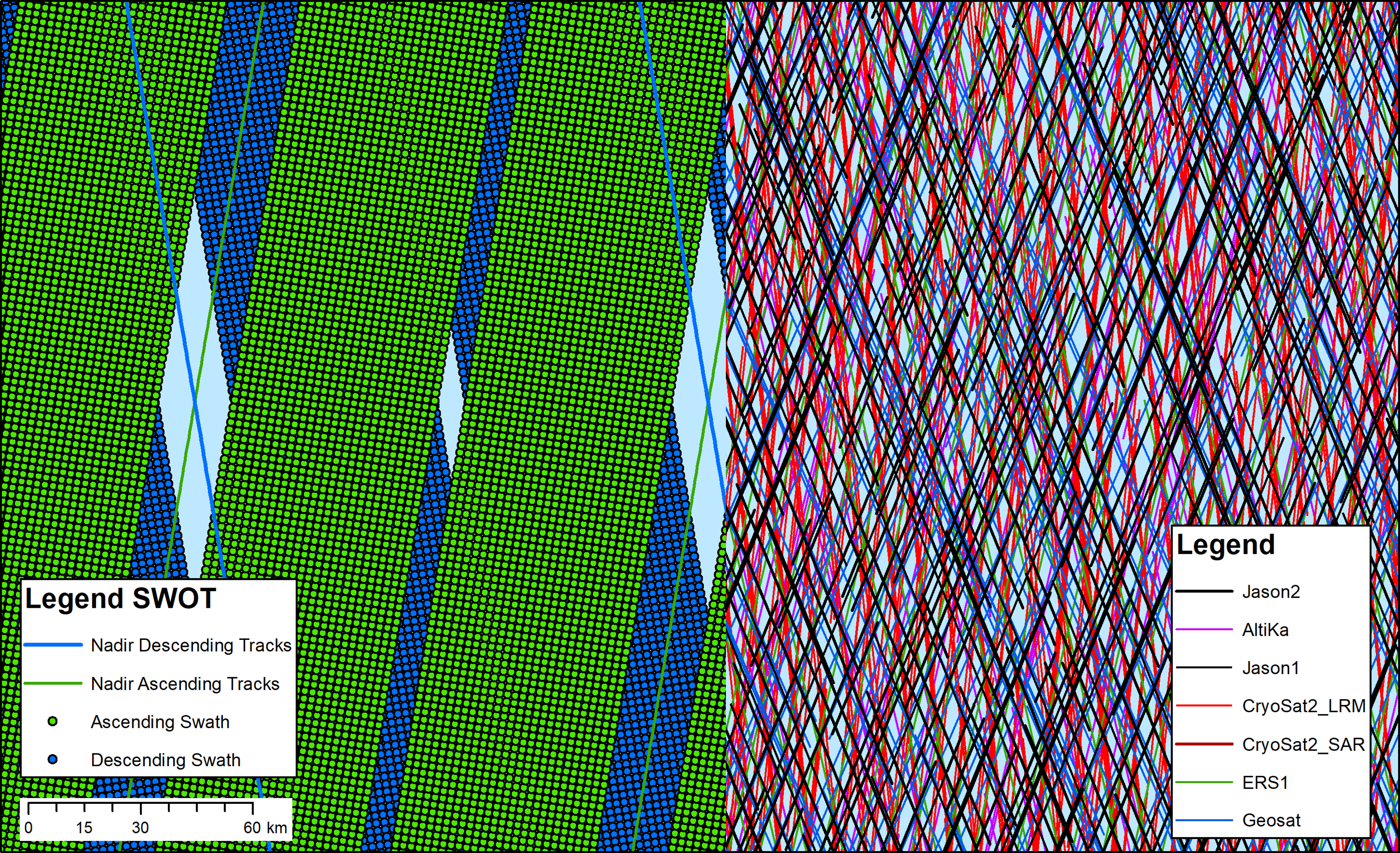
Figure 4. SWOT synthesised coverage with swaths either side of the central conventional altimeter track (left) compared with combined conventional altimeter track coverage from multiple satellite missions (right) over the same area. SWOT provides coherent swaths with global coverage every 21 days, whereas the coverage on the right is formed from six satellites over 35 years.
This should facilitate the production of a consistent sea surface map and hence a consistent gravity map, while the larger and more regular sea surface sampling should better support appropriate filtering processes. As such, the SWOT data is expected to generate significant improvements in the accuracy, resolution and reliability of offshore gravity.
Addressing complexity
There are technical challenges associated with the huge increase in data volume, as well as challenges with processing – for example, statistical noise reduction from levelling disparate track data will not work in the same way. Models of the various SWOT error sources are available; these are in theory well-understood, but the best processing route for enhancing signal and reducing real noise requires expert input.
Additional items that will need further innovation include developing the most effective approach to mitigating errors and internal inconsistencies; this can be facilitated by analysis of comparisons between collinear and crossing swaths. The best way to integrate conventional altimeter data from previous satellites and from SWOT will also need to be tested on real data.
Future Work
SWOT has the potential to generate greatly improved offshore gravity data, although a number of practical issues need to be addressed.
Getech looks forward to applying 30+ years’ experience of satellite gravity calculation to extract the best gravity data sets from the SWOT data.
We will soon be initiating a sponsored pilot study to test the potential of the new data and develop effective workflows – if you’re interested to find out more or to get involved, please contact us at gravmag@getech.com .
Written by Kirsten Fletcher, Chris Green and Simon Campbell

